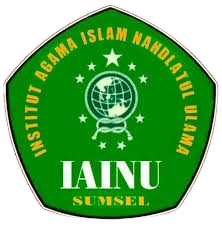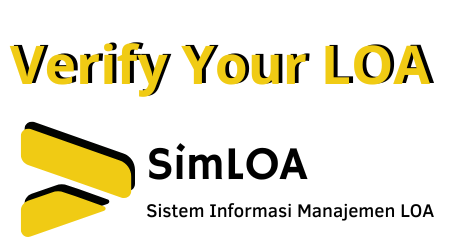Colaboration Publisher :
Author Guidelines
Author Guidelines
Author Guidelines
Title: Instructions for Writing in Legal Policy Journal
(Maximum 12 words, 14pt Platino Linotype)
First Author1, Second Author2, Third Author3
1 First Author Affiliation (Faculty and University Name), City Name, Country
2 Second Author Affiliation (Faculty and University Name), City Name, Country
3 Third Author Affiliation (Faculty and University Name), City Name, Country
Corresponding Author: [email protected]*, [email protected]
Abstract
The abstract is written concisely and factually using Platino linotype letters, size 10 pt single space with a text length not exceeding 200 words. The abstract consists of Indonesian and English. Avoid using abbreviations or citations in abstracts. Results and conclusions are written in actual detail. The abstract must briefly explain the background of the research problem (gap), research objectives, research methods, research results (novelty), and conclusions.
Keywords: Contains two to five words/phrases with semicolon punctuation separating
Abstract
Abstract is written concisely and factually using platinum linotype letters, size 10 pt single spaced with a text length not exceeding 200 words. The abstract consists of Indonesian and English. Avoid using abbreviations or quotes in the abstract. Results and conclusions are written in an actual and detailed manner. The abstract must briefly explain the background of the research problem (gap), research objectives, research methods, research results (novelty), and conclusions.
Keywords: Contains two to five words/phrases separated by a semicolon
Introduction (12pt)
The introduction contains the area of study to provide context for the problem to the reported reader and needs to claim certainty and importance, the background of the problem (gap) contains a more specific statement about aspects of the problem that have been reported by other researchers to provide a basis for information that has been reported, literature review as a basis for scientific novelty statements from the manuscript, scientific novelty statements, problem formulations, hypotheses (if any); and research objectives. The introduction is written in one chapter without subtitles. All explanations in the article are written in the form of essays, so there is no numerical or alphabetical format separating chapters/sections, or to mark new chapters/sections. For that, if there is a part of the content of the article that requires numbering or bullet list, make it into flowing paragraphs as follows: (1) one, (2) two and (3) three. Each quotation from the book provides a citation in its text, and includes the source in the bibliography. The in-text citation is written like this: (Author's last name, year: page) or (Author's last name, year). Citations for manuscripts that use English, as follows: writing for the sole author of the Book (Haekal &; Zulaeha, 2019) and for 2 people authors Nurdin, (2019);Nurbaya et al., (2018) As for writers totaling 3 or more people (Cañas et al., 2017) , for citations from associations or institutions (UNESCO, 2019). The article is the original work of the author and has never been published in other media. The manuscript is presented narratively (without numbering in front of the subtitle) and exposure in the form of subtitles is avoided.
Research Methods (12pt)
Contains the type of research, time and place of research, targets / targets, research subjects, procedures, instruments and data analysis techniques and other things related to the way of research. Subtitles do not need to be notated, but are written in lowercase letters beginning with capital letters. The time and place of research need to be written precisely and clearly so that readers can understand it. The target/subject of research (for qualitative research) or population-sample (for quantitative research) needs to be clearly outlined in this section. It is also necessary to write the technique of obtaining the subject (qualitative research) and / or sampling techniques (quantitative research). The procedure needs to be described according to the type of research. How the research was conducted and the data will be obtained, it is necessary to elaborate in this section. For experimental research, the type of design (experimental design) used should be listed in this section. The type of data, how it is collected, with what instruments it is collected, and how technical it is collected, needs to be clearly described. How to interpret the data obtained, its relation to the problem and research objectives, needs to be explained clearly. All new or modified methods that have been published should be described in detail but not excessively.
(Note: Subchapters may differ according to the type or approach of research used. If there is a procedure or step that is sequential in nature, it can be given a notation (number or letter) according to its position)
Results and Discussion (12pt)
Result
The results of the study describe the main findings of the study (novelty). The presentation in the results and discussion is written systematically, only the results of data / information related to the purpose of the study. The discussion in the research article explains the results obtained from the research. The author compiles, analyzes, evaluates, interprets and compares the results of the latest findings with existing research findings. Authors must pay attention to the consistency of articles ranging from titles to bibliography. Existing tables/figures, presented with sufficient explanation and with including numbers and titles. Writing the number and title of the table are placed on the table with a left-aligned font size of 10 pt.
Table 1. Student Learning Outcomes
[Avoid using boxes, use only horizontal lines, table titles and images are written in the middle, sentence bars with a distance of 1 space, bold, table titles are placed before the table, size 10pt, annotate notes below the table or table titles for abbreviations and symbols in the table ]
No Student Name Value Predicate
Figure 1. Flipped Pattern (Image title must be Informative, image or table must be "stand alone")
[Image title is written in the middle, sentence case with a distance of 1 space, bold, table title is placed after the table, size 11pt, Source writing is placed after image title, size 10 pt]
Discussion
Discussion is the most important part of the overall content of scientific articles. The components of information discussed are: literature related to the main hypothesis, review of the most important findings, the most logical explanation based on existing theories or science, and speculation of logical possibilities of results / findings. Provide limitations from generalizations that are too far from the findings, explain the implications of the research results, recommendations from future research, focus on the main results, and then connect the message or conclusion of the main results with the purpose and title of the manuscript.
CONCLUSION (12pt)
The content of the conclusion should be in the form of answers to questions and research objectives. Conclusions should be presented in paragraph form, not bullet points, and expressed not in statistical sentences. If necessary, at the end of the conclusion can also be written things that will be done related to the next idea of the study.
ACKNOWLEDGMENTS (12pt)
If applicable, acknowledgments are addressed to official institutions or individuals who have provided funding or have made other contributions to the study. A thank you note accompanied by a research contract number.
BIBLIOGRAPHY (12pt)
We require at least 25 references in the recent 10 years. References from Journal article must be completed with vol., issue, and pages. Arrange the journal alphabetically. The bibliography is written in single spacing and spacing after 6 pt. Bibliography writing uses the American Psychological Association (APA) format (sorted alphabetically), without sequence numbers, and is not separated between book sources, online, and others. The preparation of the Bibliography following standard techniques must be done by default and consistently. To maintain consistency in the way of reference, citation and bibliography it is recommended to use a Reference Manager application, such as Zotero, Mendeley, or another reference management application.





.png)
.png)



.png)
.png
)



